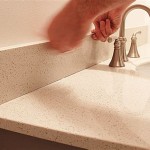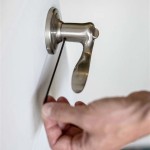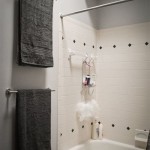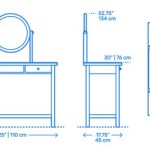Replacing Bathroom Sink Cabinet Storage
Bathroom sink cabinets are essential for storing toiletries and other bathroom necessities. Over time, these cabinets can become worn, outdated, or simply fail to meet changing storage needs. Replacing a bathroom sink cabinet can significantly improve both the functionality and aesthetics of a bathroom. This article provides a comprehensive guide to replacing bathroom sink cabinet storage.
Assessing Current Storage Needs
Before selecting a new cabinet, it's crucial to evaluate existing storage needs and identify any shortcomings of the current setup. Consider the types of items stored, the frequency of use, and whether additional space is required. This assessment helps determine the appropriate size, configuration, and features of the new cabinet.
Choosing the Right Cabinet Type
Several types of bathroom sink cabinets are available, each with its own advantages and disadvantages. Common options include:
- Vanity cabinets: These traditional cabinets offer ample storage space and come in various styles, materials, and sizes.
- Pedestal sinks: While aesthetically pleasing, pedestal sinks offer minimal storage.
- Floating vanities: These wall-mounted cabinets provide a modern look and free up floor space, making the bathroom appear larger.
- Console sinks: These sinks feature exposed plumbing and often include a shelf or small cabinet for limited storage.
The choice of cabinet type will depend on individual preferences, bathroom size, and storage requirements.
Measuring the Space
Accurate measurements are essential for selecting a cabinet that fits the available space. Measure the width, depth, and height of the existing cabinet and the surrounding area. Consider any obstacles, such as plumbing fixtures or electrical outlets, that might restrict the size of the new cabinet.
Selecting Materials and Finishes
Bathroom sink cabinets are available in a variety of materials, including wood, plywood, MDF, and PVC. Solid wood cabinets are durable and offer a classic look, while plywood and MDF are more affordable options. PVC cabinets are highly water-resistant and ideal for humid environments. Finishes range from painted surfaces to natural wood stains, allowing for customization to match existing bathroom decor.
Preparing for Installation
Before beginning the installation process, gather the necessary tools, including a screwdriver, wrench, level, and measuring tape. Turn off the water supply to the sink and disconnect the plumbing lines. Remove the old cabinet carefully, ensuring no damage is caused to the surrounding walls or flooring.
Installing the New Cabinet
Follow the manufacturer's instructions carefully when installing the new cabinet. Securely attach the cabinet to the wall or floor, ensuring it is level and stable. Connect the plumbing lines to the new sink and faucet. Seal any gaps around the cabinet with caulk to prevent water damage.
Considering Additional Features
Modern bathroom sink cabinets often incorporate additional features to enhance functionality and convenience. These features might include:
- Soft-close drawers and doors: These mechanisms prevent slamming and reduce noise.
- Built-in organizers: Drawers with compartments and dividers help keep toiletries organized.
- Integrated lighting: Under-cabinet lighting provides task lighting and enhances the overall ambiance of the bathroom.
- Medicine cabinets: Combining a sink cabinet with a medicine cabinet provides additional storage and a mirrored surface.
Carefully consider these features when selecting a new cabinet to maximize storage efficiency and personalize the bathroom space.
Budgeting for the Project
Replacing a bathroom sink cabinet can range in cost depending on the chosen materials, features, and installation complexity. Establish a budget beforehand and research various options to find a cabinet that meets both functional and financial requirements. Factor in the cost of any additional materials, such as plumbing fixtures or hardware, as well as potential labor costs if professional installation is required.
Proper planning and execution are crucial for a successful bathroom sink cabinet replacement. By carefully considering storage needs, cabinet types, materials, and installation requirements, homeowners can create a functional and aesthetically pleasing bathroom space.
The Perfect Under Sink Organization Solution Thrifty Decor Diy And Organizing

Bathroom Vanity Storage And Organization Ideas You Need

18 Genius Under The Sink Storage Ideas And Organizers

I Found More Storage By Replacing My Double Door Base Cabinet Diy Bathroom Vanity Remodel

How To Organize Your Under Bath Sink Cabinet The Container

Bathroom Vanity Storage And Organization Ideas You Need

25 Brilliant Ways To Organize Under The Bathroom Sink

Under The Bathroom Sink Storage Four Generations One Roof

I Found More Storage By Replacing My Double Door Base Cabinet Bathroom Vanity Diy Sliding Shelves

18 Genius Under The Sink Storage Ideas And Organizers
Related Posts







